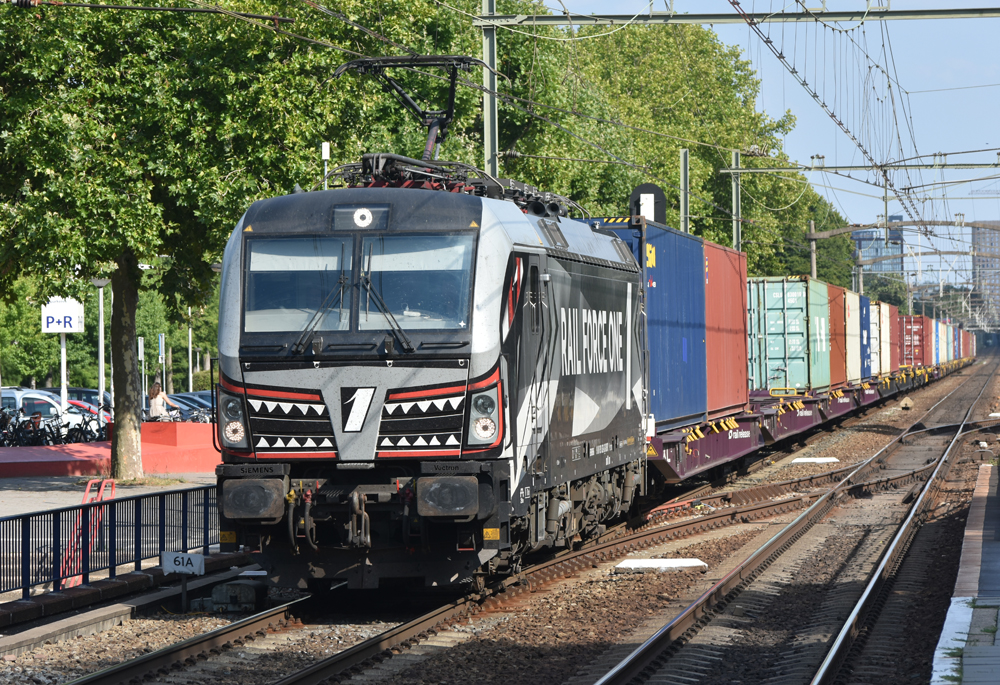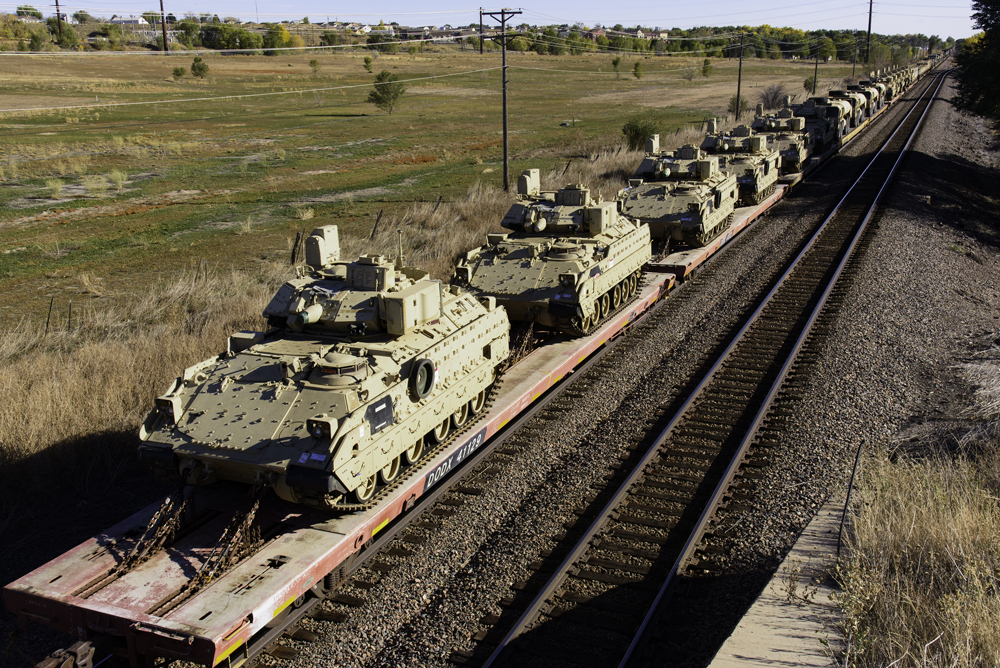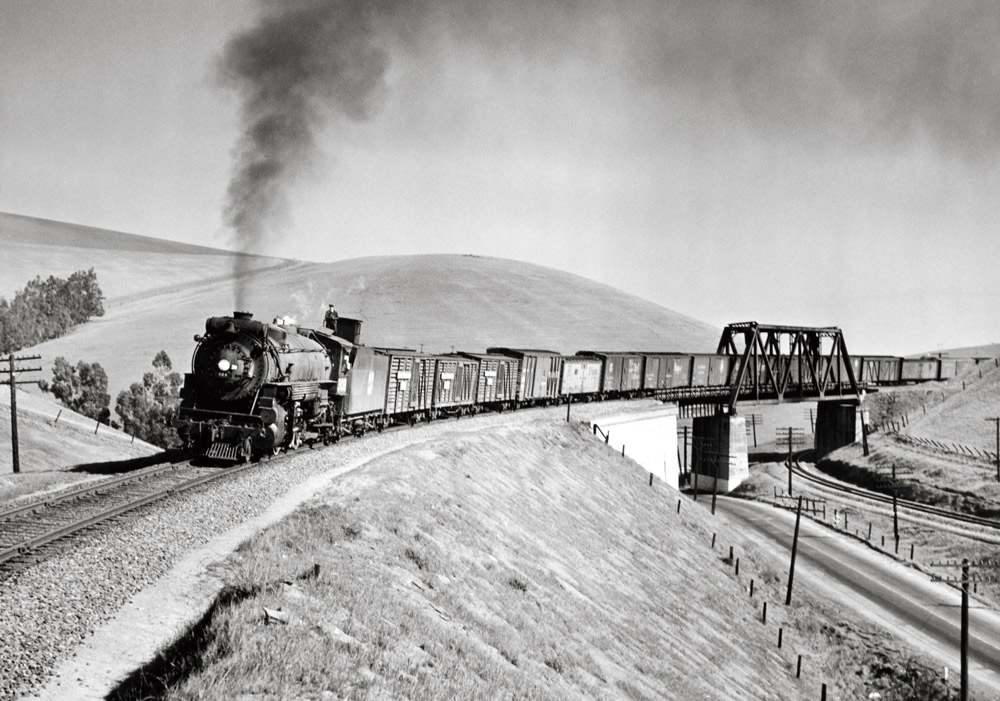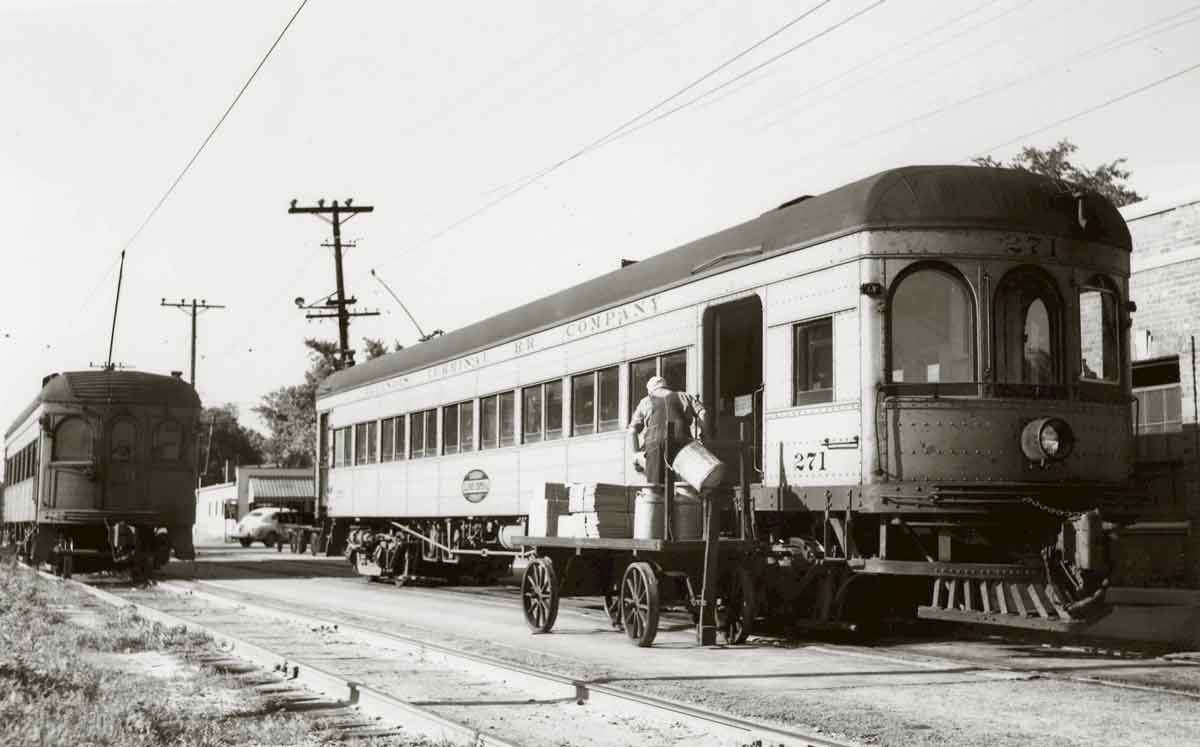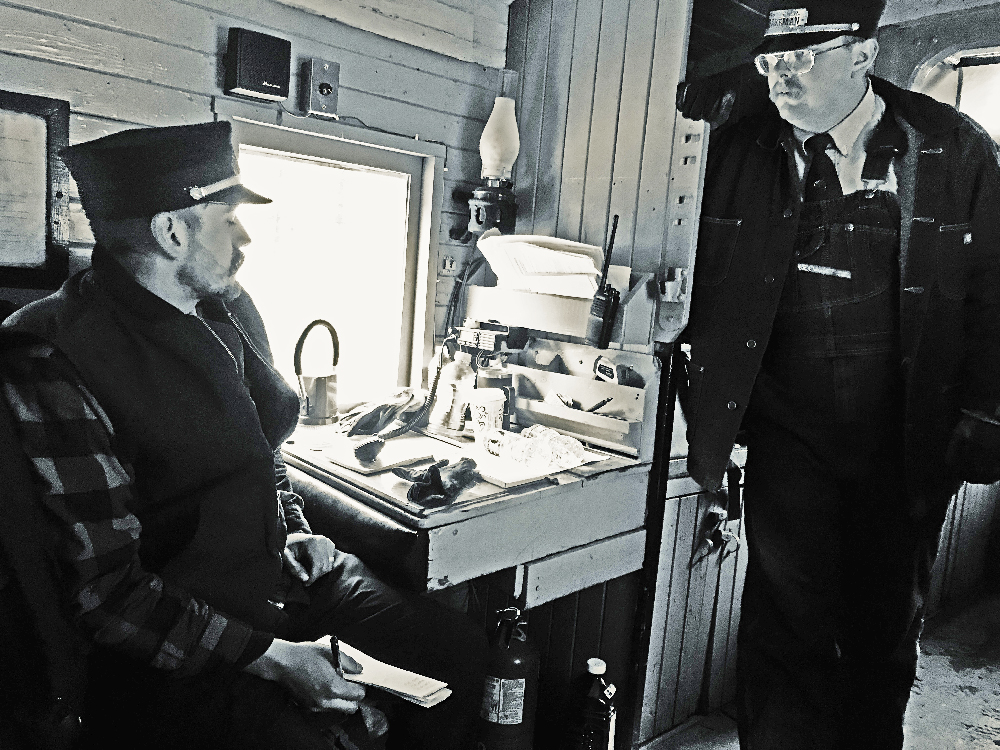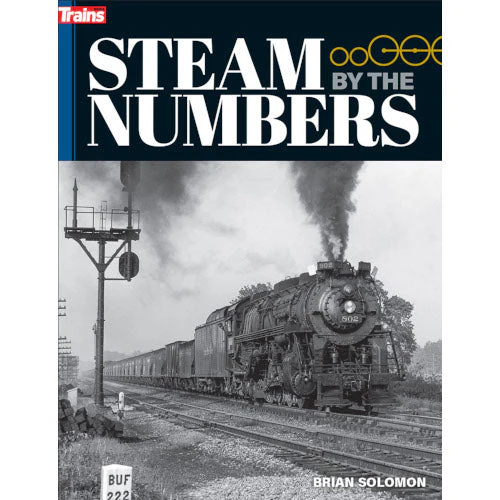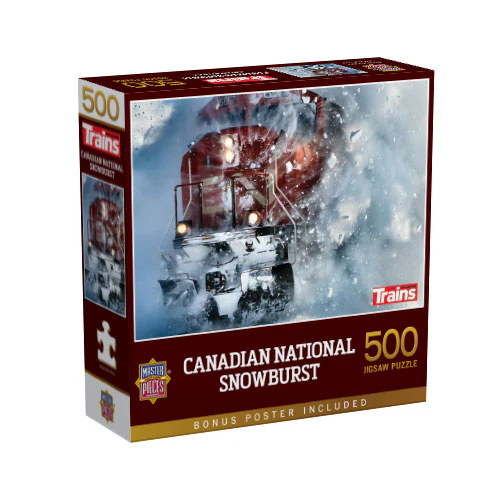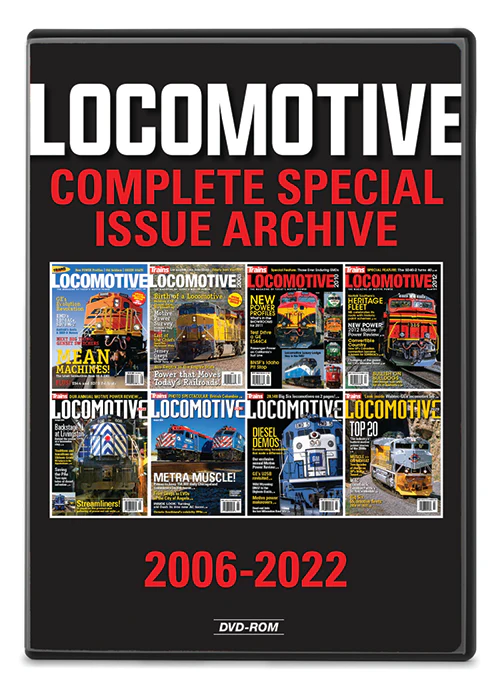Locomotive wraps
Railroad paint schemes span the color spectrum, from the dull to the fluorescent, the drab to the flamboyant, but not every railroad has the time, money, brand guidelines, or spare rolling stock to allow for frequent livery changes. Painting is an expensive and time-consuming process, with the results expected to last for years or even decades.
In contrast, a vinyl wrap requires considerably less effort, and is much less expensive. While some time is needed to create the design and ready the vinyl, the required downtime for a locomotive is considerably less. While painting needs multiple days or even a week to strip an existing paint job and prep the surface for repainting, a vinyl wrap can take just a few days to apply over an entire engine.
Intricate designs are also much more feasible when using vinyl, as there doesn’t need to be a team of skilled painters laboring away. Instead, a single artist can apply their work to a locomotive-shaped template, and the result can be printed out at an incredibly high resolution.
As a result, when railroads need (or want) to put short-term or deeply intricate designs on their locomotives, a vinyl wrap is often the best option, balancing cost and maintenance time constraints while still allowing some truly memorable liveries. As seen below, not all wraps are created equal, and they convey different meanings.
Here are some ingenious wraps found across the world.
Heritage
In the United States, the fractious and often complicated history behind today’s railroads ensures that many contain portions of numerous predecessor lines. As these predecessors and their paint schemes fade from memory, many railroads have sought to honor their past by applying historic liveries to their existing fleet.
Amtrak 662 — Train Sim World 2/AEM7 wrap
Amtrak’s AEM-7 was initially derided for its boxy appearance and somewhat simple livery when the locomotive rolled onto the Northeast Corridor in 1980. After all, it was the replacement for one of the most beautiful locomotive classes in the world, the GG1. However, as the AEM-7s stretched their service lives into a 36-year career, the usurpers became the institution, and their boxy carbodies with “Phase III” paint defined an era of the Northeast Corridor.
Considering the status of the locomotives and the line they ran upon, it is no surprise that the AEM7 has become a fixture in train simulator games, representing the “modern” era of electric railroading in the United States that bridges the gap between the GG1 and the Acela. The most popular such game is the Train Sim World series by UK-based publisher Dovetail Games, and in late 2021, the company partnered with Amtrak to wrap ACS64 locomotive No. 662 in the Phase design to promote the launch of Train Sim World 2. In addition to the AEM7-inspired livery, the locomotive featured large stickers with the logos of both Amtrak and Dovetail Games, the Train Sim 2 logo, and a silhouetted skyline of the cities that are served by the Northeast Corridor.
Instantly beloved by railfans, No. 662 became one of the most frequently-photographed ACS64 units for the remainder of 2021, and all of early 2022. Sadly, all good things must end, and the wrap was removed in late spring 2022.
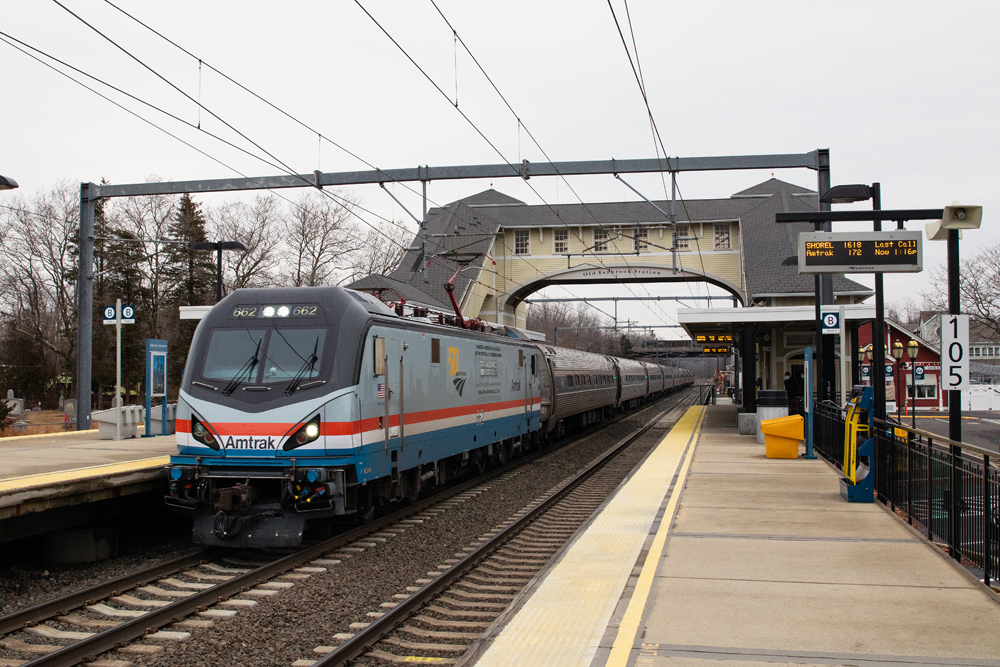
Metro-North heritage wraps — Conrail/Penn Central/Metro North/New Haven/NYC
The lines of Metro-North Railroad, one of the two commuter operations of the Metropolitan Transportation Authority, include those previously operated by some of America’s most famous railroads, including the New York Central; the New York, New Haven & Hartford; Penn Central; and Conrail. To celebrate the railroad’s 40th anniversary in 2023, Metro-North began wrapping some of its P32AC-DM locomotive fleet to honor these roads. As of March 2024, locomotives for the New York Central, Penn Central, and Conrail have been released into traffic, along with a wrap commemorating the original 1980s-era “beach ball” paint scheme, used when Metro-North began operations. More are currently in the works, but these are being kept “under wraps.”
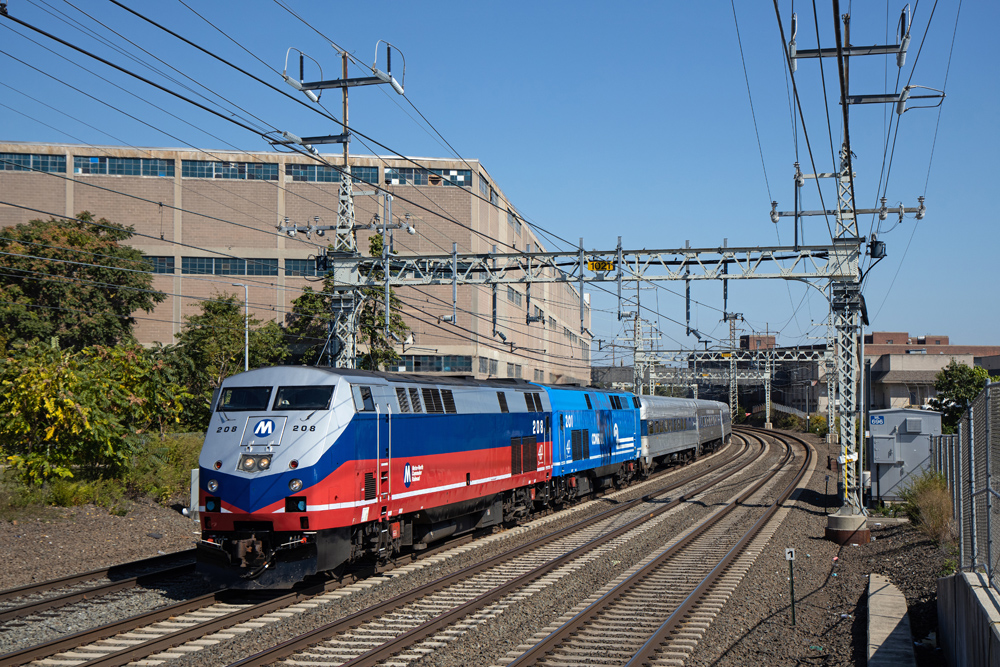
NJ Transit heritage wraps — PRR/CNJ/EL
Much like Metro-North, New Jersey Transit’s lines are a mixed bag of predecessor railroads that crisscrossed the Garden State. NJT has long honored its heritage — at the beginning of the agency’s rail operations in the early 1980s, GG1 No. 4877 was repainted into Pennsylvania Railroad Tuscan Red.
Today, NJT continues this trend, wrapping four locomotives in the liveries of predecessor railroads. Two GP40PH-2 locomotives (Nos. 4101 and 4109), an ALP45DP (No. 4519), and an ALP46A (No. 4636) carry the liveries of the Pennsylvania Railroad, the Erie Lackawanna, the Central Railroad of New Jersey, and a 1970s-era paint scheme known as the “Bluebird” livery. In fact, GP40 Nos. 4109 and 4101 wear paint schemes they wore in the past — No. 4109 wears its as-delivered CNJ paint, while No. 4101 wears the Bluebird scheme, applied to members of the GP40PH-2 fleet upon the formation of NJT in 1983.
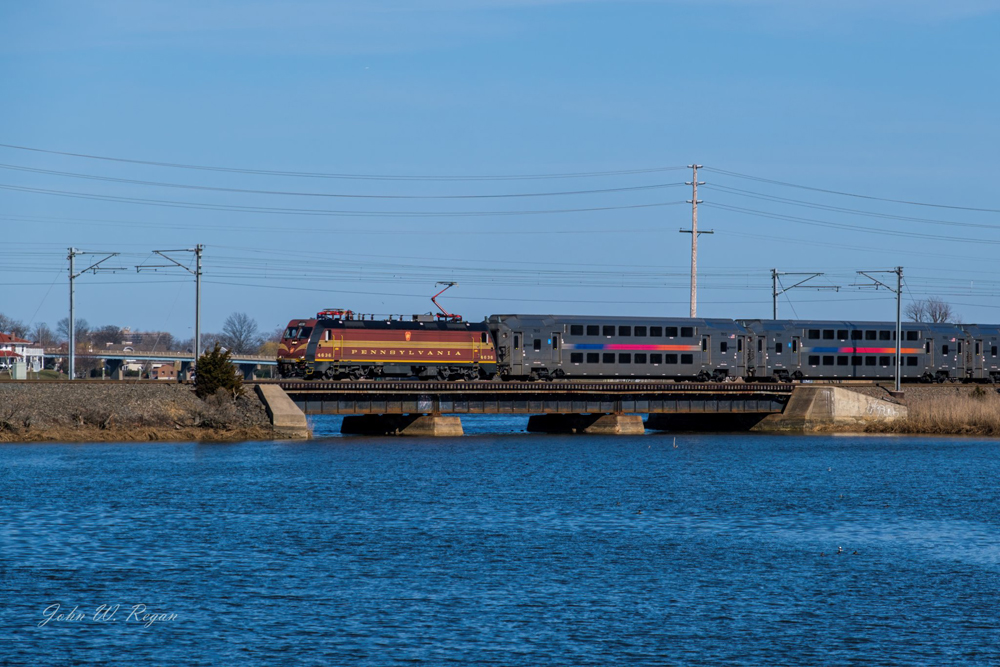
Metra 100
Like many other commuter railroads, Chicago’s Metra was formed out of a vast network of other railways’ trackage, and has applied heritage liveries to many of its locomotives to reflect this. However, many, if not all, of these locomotives are painted, not wrapped, and will bear the colors of lines like the Milwaukee Road or the Chicago, Burlington & Quincy until such time that they are stripped and repainted.
One locomotive, however, is not painted in a heritage livery, and the reason is quite special. Metra No. 100 was the first F40PH purchased by the Regional Transit Authority — the predecessor to Metra — in 1977. This locomotive has been in continuous service with the RTA and Metra ever since, racking up millions of miles. To celebrate the locomotive’s 40th year in service, Metra and the Shore Line Interurban Historical Society applied a wrap to return it to its as-delivered appearance.
This wrap was removed sometime in late 2018 or early 2019, but the fact that it was applied at all — that an engine has served one railroad for so long — is incredible.
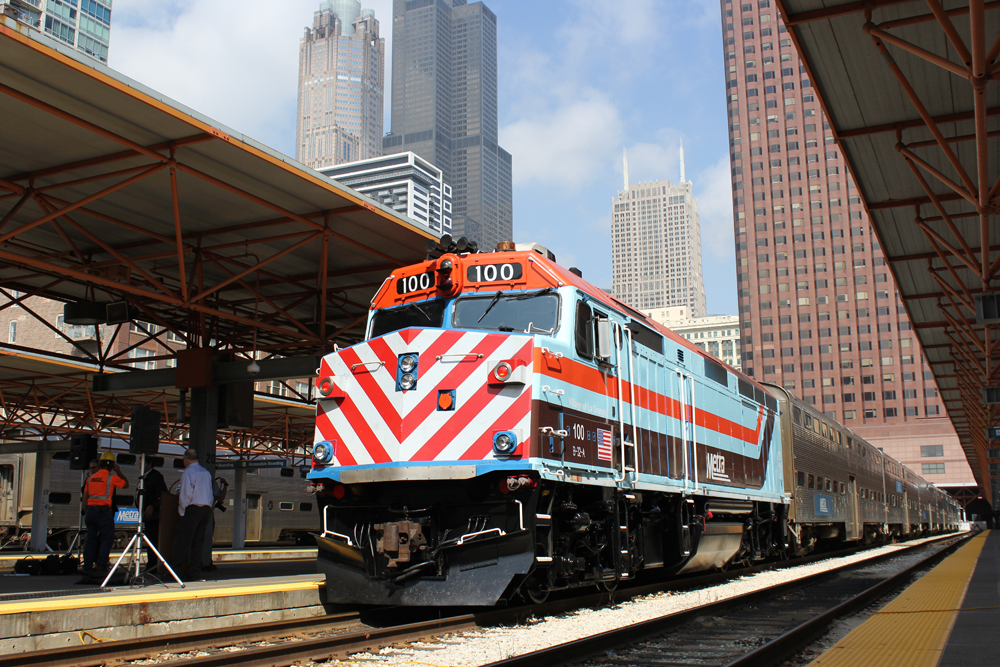
German electric 183001 — ‘Adler’ design
It’s a German electric locomotive with a wrap showing the very first German locomotive, done for the 175th anniversary of German Railways in 2010. The design shows the steam engine called ‘Adler’ [Eagle], built in England and shipped to Germany as a kit of parts.
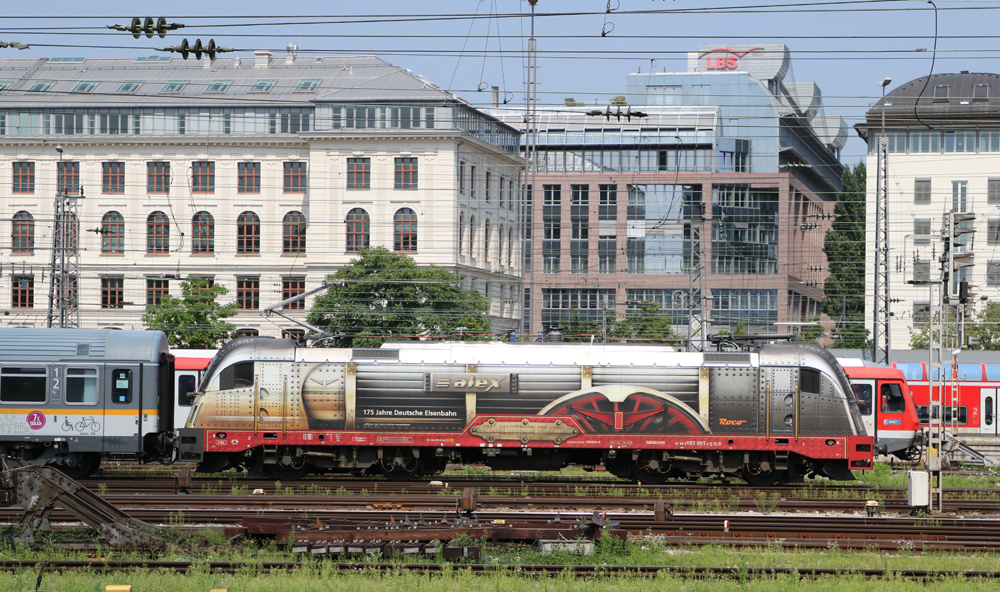
Advertising
Heritage is not the only reason to wrap a locomotive. Trains are massive, and their routes through urban environments means that they can be effectively transformed into mobile billboards with little more than some printed vinyl. Results are often mixed, but occasionally they come out looking simply incredible.
VIA Rail advertising wraps — F40PH
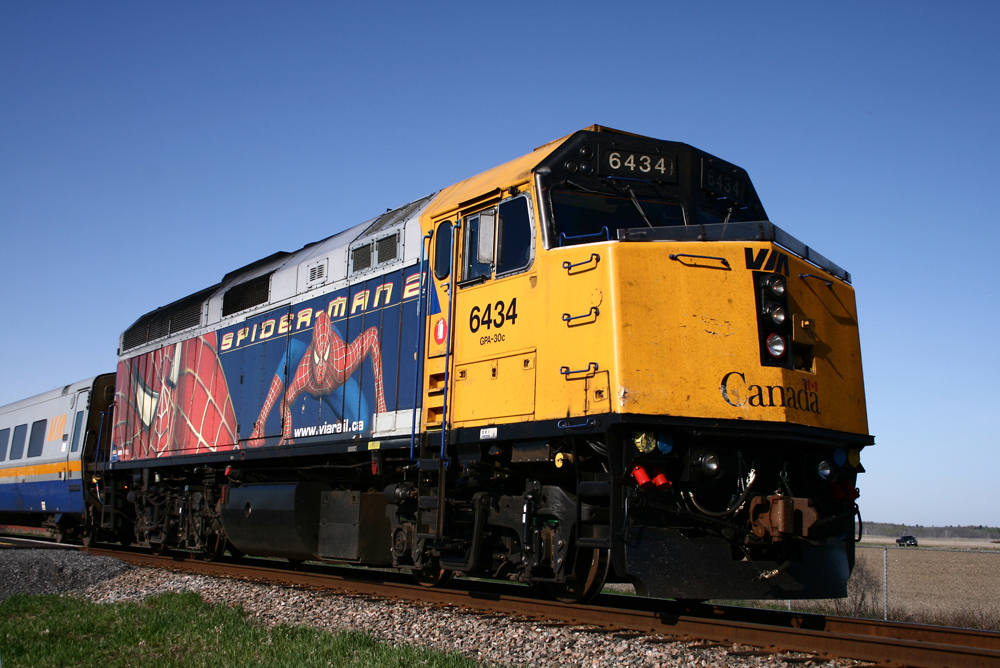
VIA Rail Canada was somewhat infamous for wrapping its F40PH fleet in the 1990s and early 2000s. While some wraps were absolutely dreadful — such as an ugly brown wrap advertising the Quebec Provincial Lottery — some results were quite striking, and proved to be very popular with enthusiasts.
Locomotive No. 6400 was wrapped in a Diet Pepsi livery in 1990, creating a striking white scheme that would rival the Amtrak B32-8WH fleet for the title of “Pepsi Can.”
Six locomotives were wrapped for a promotion of the movie Spider-Man 2 in 2004, and following the movie’s premiere the wraps stayed on the locomotives for many years — locomotive No. 6408 would keep Spidey on its side until 2011, long enough for the film to get a sequel, and nearly long enough for the entire Spider-Man franchise to get rebooted, with The Amazing Spider-Man premiering in 2012.
Kool-Aid had a whopping 10 locomotives wrapped in May 2000. The locomotives un-wrapped by the end of that summer. However, the popularity of the scheme with enthusiasts meant that the locomotives were immortalized in HO scale by Rapido Trains, which released models in 2018.
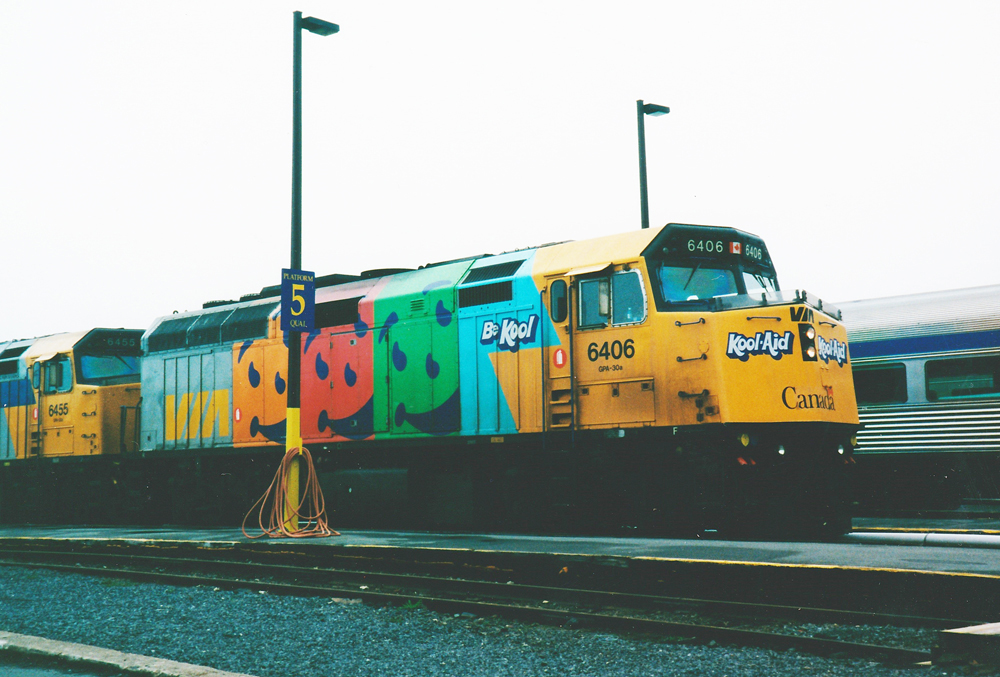
AMTK 470 — King Tut
An extremely striking black-and-gold wrap was applied to Amtrak 470 from 2012 to 2013, advertising the exhibition of Egyptian Pharaoh Tutankhamun at Seattle’s Pacific Science Center. Popular with railfans and a successful advertising technique, a similar wrap was applied to ACS-64 No. 606 in 2022 to advertise a King Tut exhibition in Boston and Washington; however, the differences in graphic design meant that the wrap was much less popular.
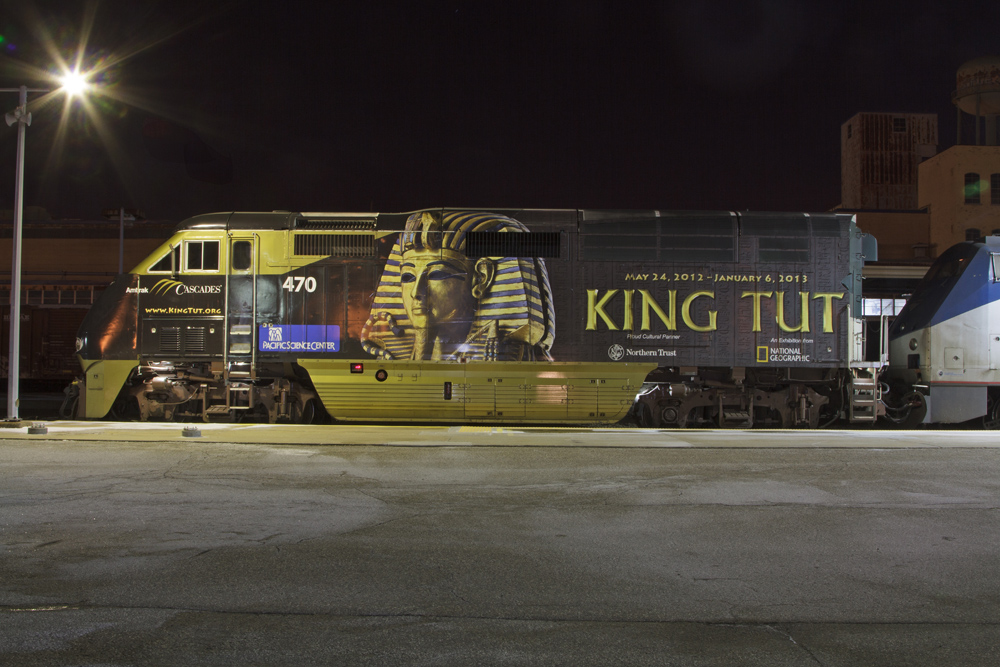
Sound Transit 902 — Tacoma Red
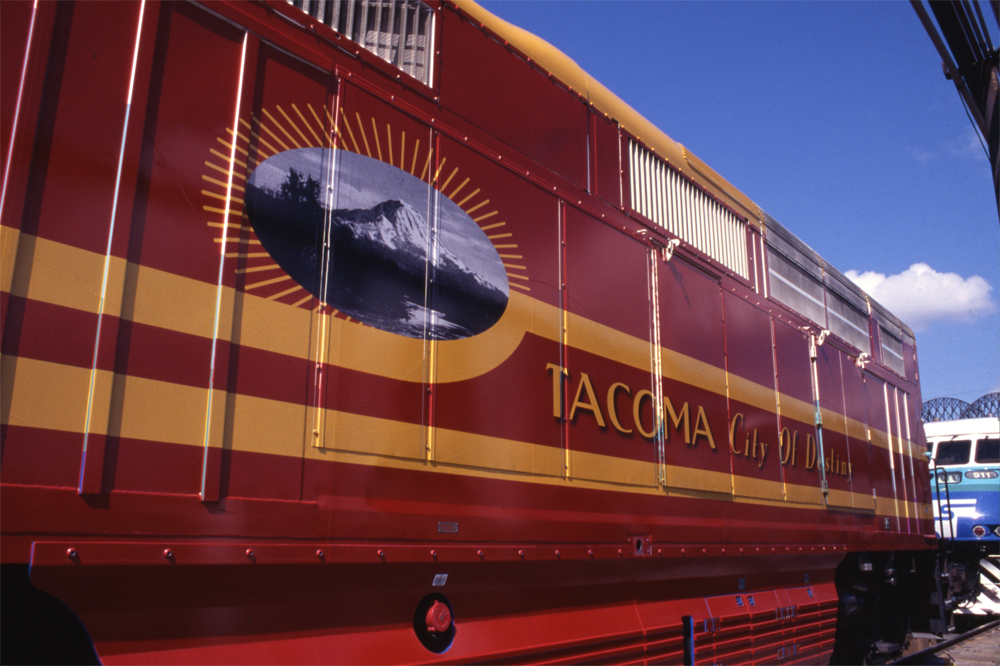
This beautiful yet under-documented red and gold wrap was applied to Sound Transit F59PHI 902 in 2007 to advertise a new “reverse commute” schedule, allowing Seattle-area commuters the ability to commute into Tacoma during peak hours. Proclaiming Tacoma to be the “City of Destiny,” this wrap was extant for only two years, before being removed and replaced in 2009 with a killer whale-themed wrap advertising the ORCA all-in-one fare card.
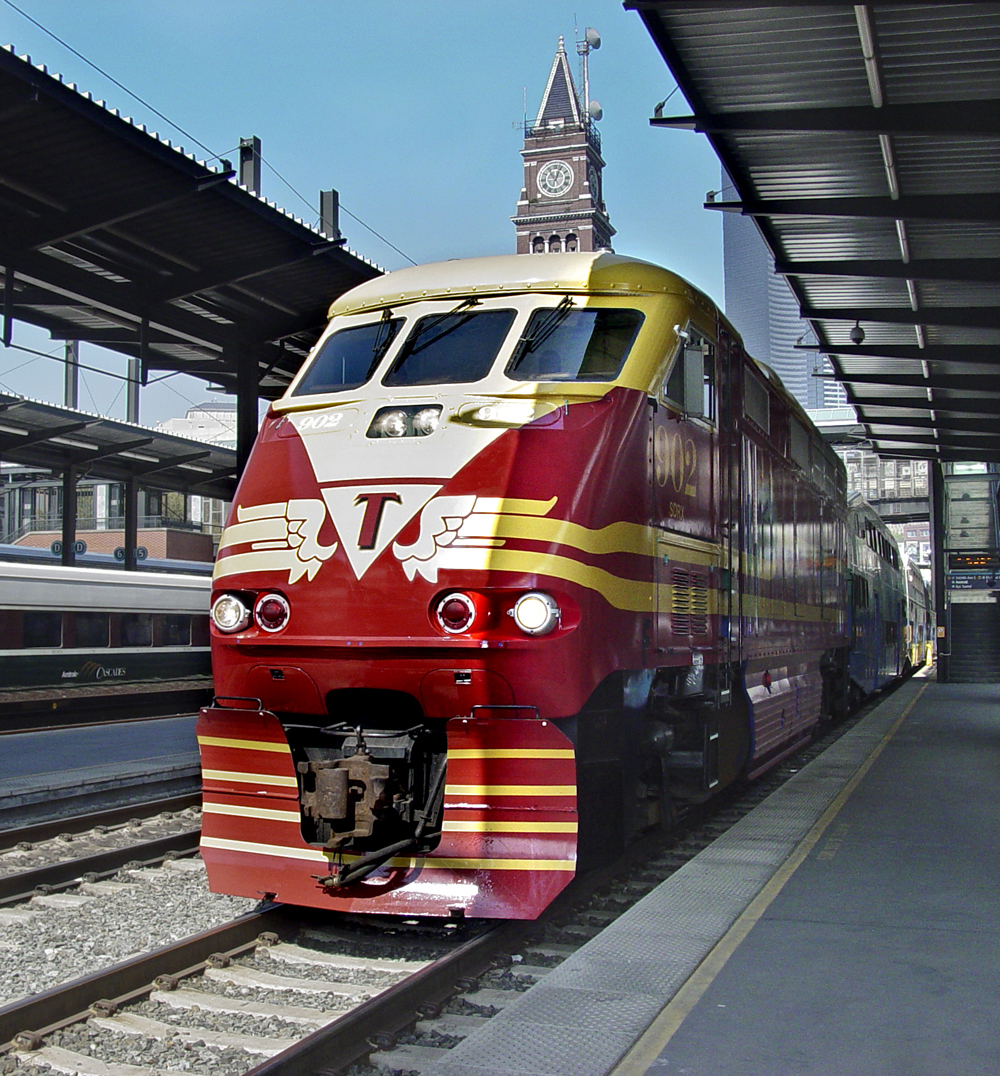
Commemoration
Not all wraps are to celebrate the history of a railroad, or to advertise products to bystanders. Some wraps exist to make a social stance, or to elevate previously unheard voices.
DLR “Trainbow”/ UK TOC Trainbows/Chicago Transit Trainbows
The concept of the “Trainbow” was first conceived in 2015, on London’s Docklands Light Railway (DLR). Designed to celebrate the 10th anniversary of Transport for London’s (TfL) internal LGBT+ organization OUTbound, the wraps were applied to two two-car trainsets in time for London Pride 2015. The design quickly made waves within the British rail industry, and in the years since a majority of Train Operating Companies, including some freight operators, have applied special LGBTQIA+ wraps to multiple units and locomotives. Notably, operator Avanti West Coast wrapped an entire 11-car class 390 “Pendolino” multiple unit in August 2020, becoming the first TOC to do so to an entire trainset. Additionally, the concept has made its way across the Atlantic, with the Chicago Transit Authority wrapping a train in LGBTQ colors every June since 2017.
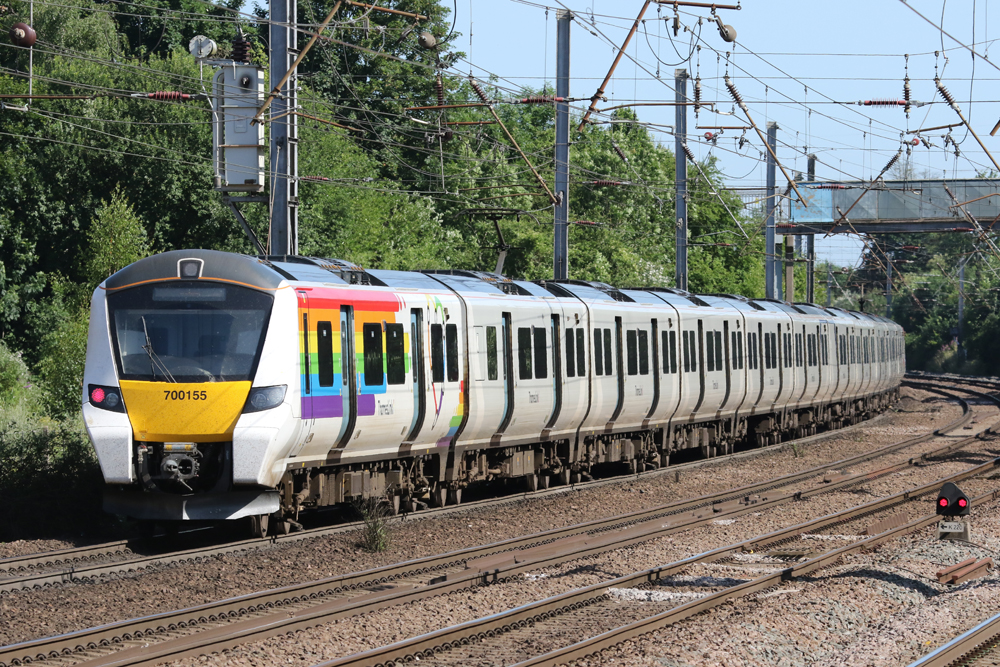
Indigenous artwork wraps, Australia — The Ghan, Adelaide Trams, Queensland New Generation Trains
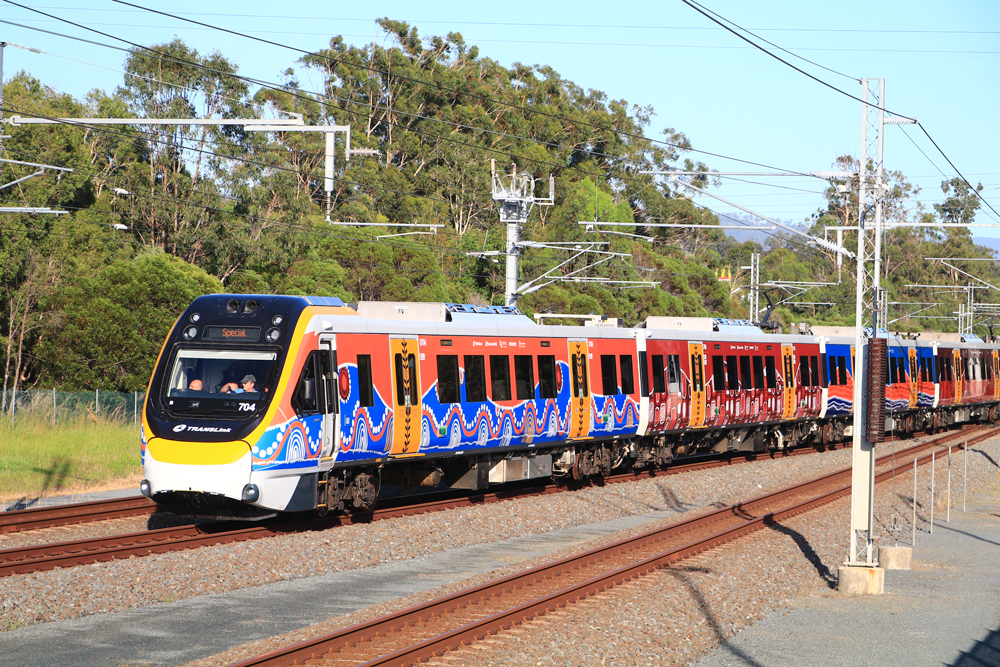
Various Australian government organizations and transit agencies have begun honoring the country’s rich Aboriginal culture and history with temporary wraps of indigenous art on various pieces of rolling stock.
- In 2021, a tram operating on the Adelaide Metro system in the state of South Australia was wrapped in the work of Gubbi Gubbi artist Maggie-Jean Douglas, whose work was chosen as the poster for the 2021 NAIDOC Week — an event that acknowledges and celebrates the history, culture, and achievements of Aboriginal and Torres Strait Islander Australians.
- Public Transport Victoria, which operates commuter trains in the state capital Melbourne, wrapped an Alstom X’Trapolis train in a work by Gunnai, Yorta Yorta and Gunditjmara artist Dixon Patten. Titled “Barring,” the art was applied to refurbished X’Trapolis 835M in December 2023.
- Queensland Rail, a wholly owned subsidiary of the state government, applied a wrap to six Bombardier New Generation Rollingstock trains (701-706) in 2017. Titled “Travelling,” the art was created by the Gilimba ad agency lead artist Riki Salam.
- Journey Beyond Rail, operator of transcontinental luxury train The Ghan, wrapped three coaches of the train in 2021 in association with Tourism Northern Territory. Advertising that year’s Parrtjima festival in Alice Springs, the wrap featured “Crossroads,” a work by Aboriginal artist Chantelle Mulladad. Unusually for most wraps, the interior of the coaches were also modified, with one coach featuring an “immersive light installation.”
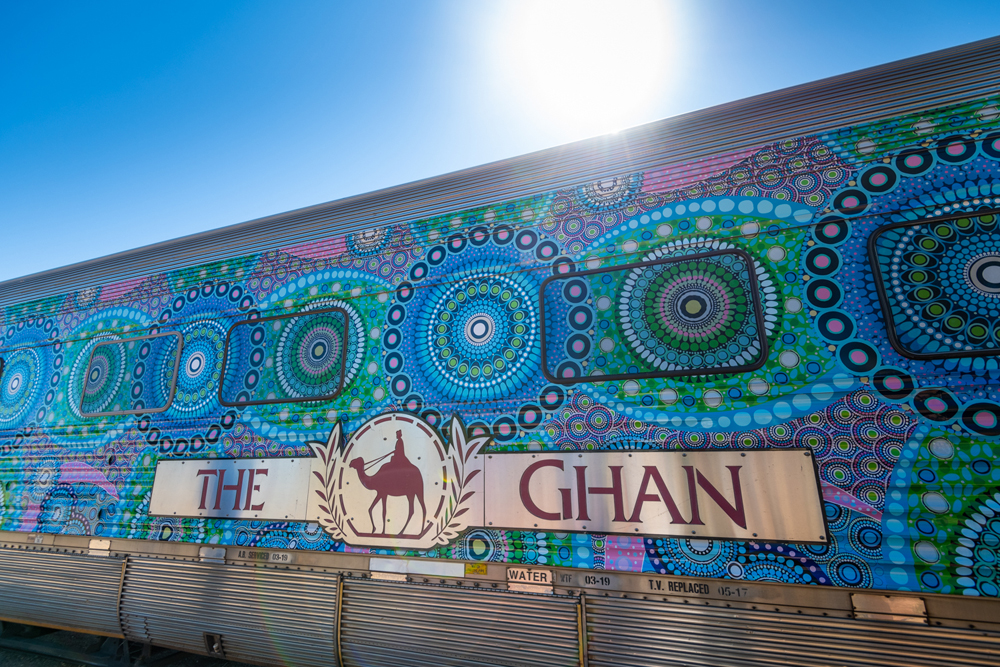
Just for Fun
Not every wrap has to be meaningful. Sometimes they can just be to brighten up everyone’s day.
Rail Force One 193 623 & 193 949— Sharky
Dutch freight operator Rail Force One has a history of applying interesting liveries to its locomotives, but none are so outwardly amazing as the one applied to Siemens Vectron Nos. 193 623 and 193 949, better known as “Sharky.” This toothy, smiling face can be seen across Europe on Rail Force One trains, where company Facebook posts will often proclaim that “he hungers for” his cargo. Its levity is much appreciated by European railfans.
